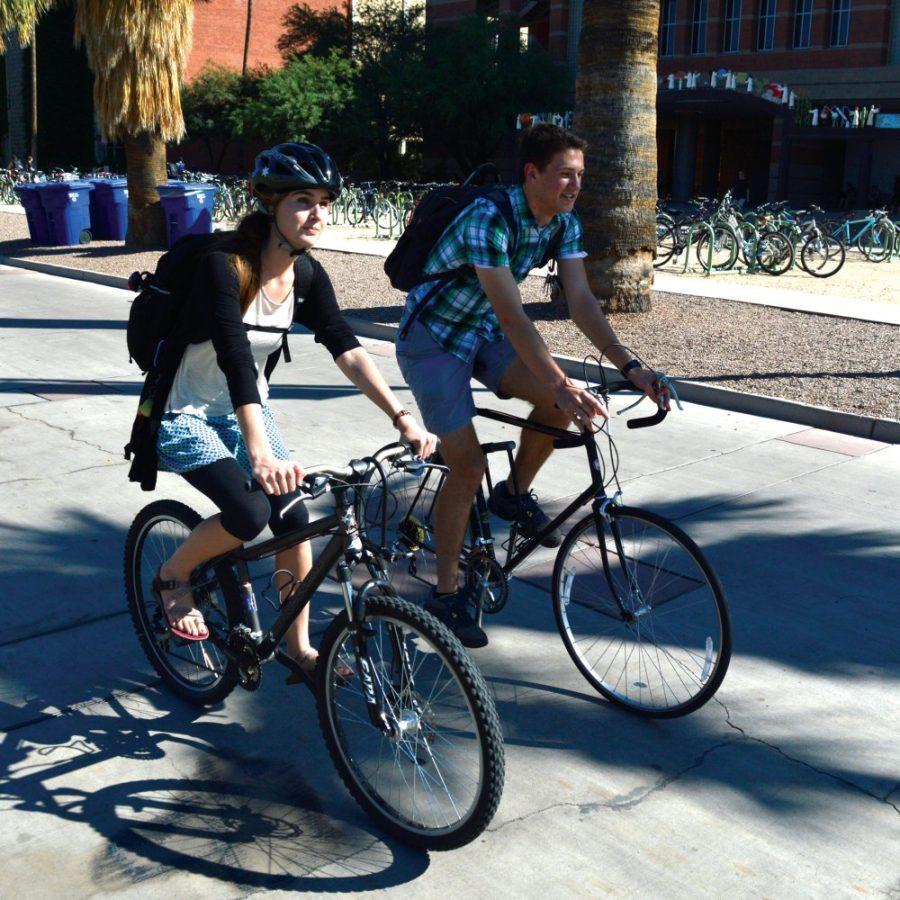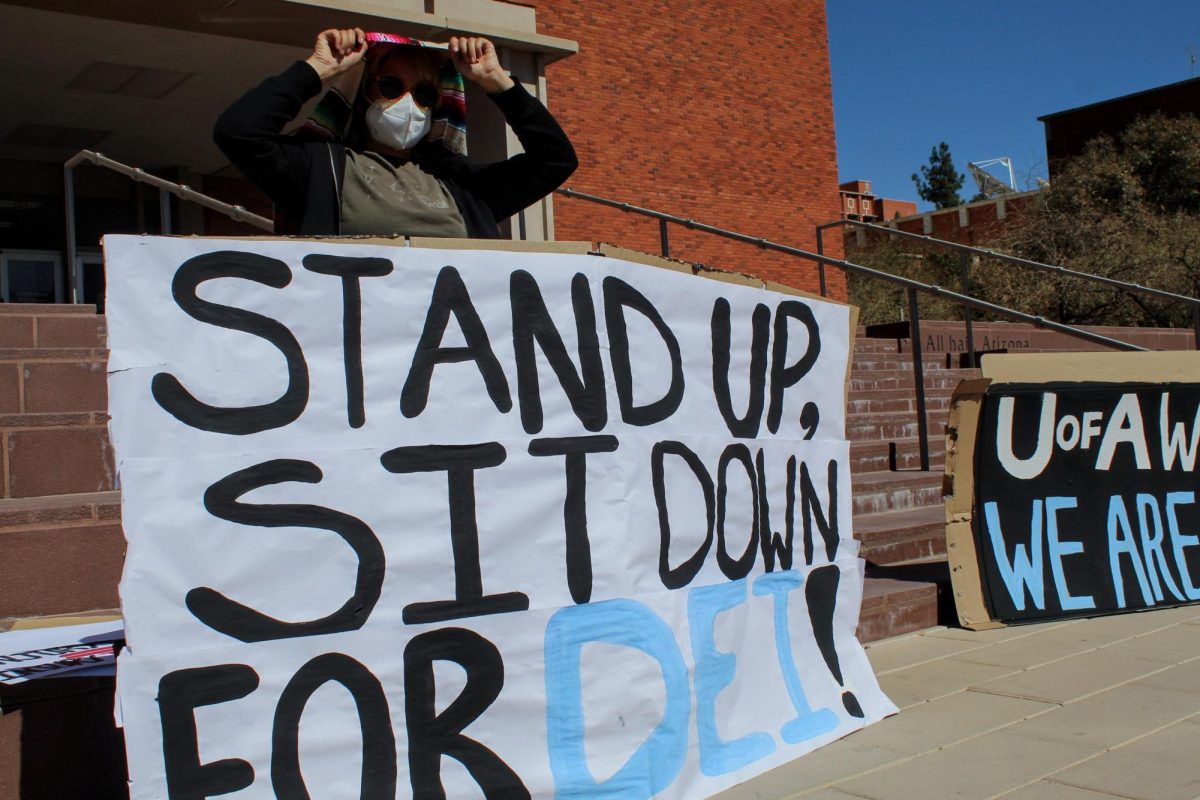UA researchers confirmed in a study released earlier this month that wearing a bicycle helmet does in fact significantly decrease the risk of traumatic brain injury and even death.
The study shows that the odds of bicycle riders suffering severe brain injuries after serious accidents are reduced by 58 percent if they are wearing helmets, compared to riders who are not. Odds of death for helmeted riders from such injuries decrease by 59 percent.
“If you are severely injured and you were wearing a helmet, you are going to fare better than if you were not,” said Dr. Bellal Joseph, a trauma surgeon and associate professor of surgery for Banner-Health University Medical Center. Joseph was also the lead author of the study mentioned in a press release Oct. 8 at the 2015 Clinical Congress of the American College of Surgeons. The study is more comprehensive and definitive than a similar study described by Joseph during an interview with The Daily Wildcat last February.
In the new study, researchers analyzed records of 6,267 patients who had suffered severe brain injuries after bicycle accidents. Just over 25 percent of the cyclists were wearing helmets.
Dr. Ansab Haider, a research fellow at the UA, said he is convinced that helmets provide safety benefits for minor accidents dealing with scrapes and bruises, and that helmets reduced the chances of head bleeds.
“But the real question was: If you get into a bicycle-related accident and end up with a head bleed, does helmet use somehow protect you?” Haider said.
The short answer is yes.
“When you hone in on that severe group of people who actually developed a brain injury and then look at how they did, the helmet really made a difference,” Joseph said.
Haider and Joseph cited the study to support a push for creating programs that increase bike helmet use, the manufacturing of safer helmets, and the development and enforcement of helmet laws.
Allison Alterman, a senior studying creative writing and special education and a member of the UA Cycling Club, said she disagrees with the legal part of that push.
“I think that when [Haider and Joseph] talk about putting resources into making helmet laws and enforcing those helmet laws, that maybe the greater issue is putting those resources into safer environments,” Alterman said. “When there’s a death of a cyclist, if there’s a one sentence report, it’s going to say: ‘Cyclist hit from behind by driver, killed. Not wearing a helmet,’ ” Alterman said.
The problem with such statements, she said, is that they shift the blame of the death to lack of helmets instead of dangerous roads and the situations they create in which drivers are in a position to strike riders.
Alterman does, however, acknowledge the importance of wearing helmets.
“[The UA Cycling Club has] an absolute policy: if you show up at the flagpole for a ride without a helmet, you get sent home. You are not allowed to a ride with the team, you are not allowed on any group rides or [to] associate yourself with the UA cycling team if you are not wearing a helmet,” Alterman said. “As soon as I put a cycling kit on and I’m going on a training ride, I would never even think of not wearing a helmet.”









